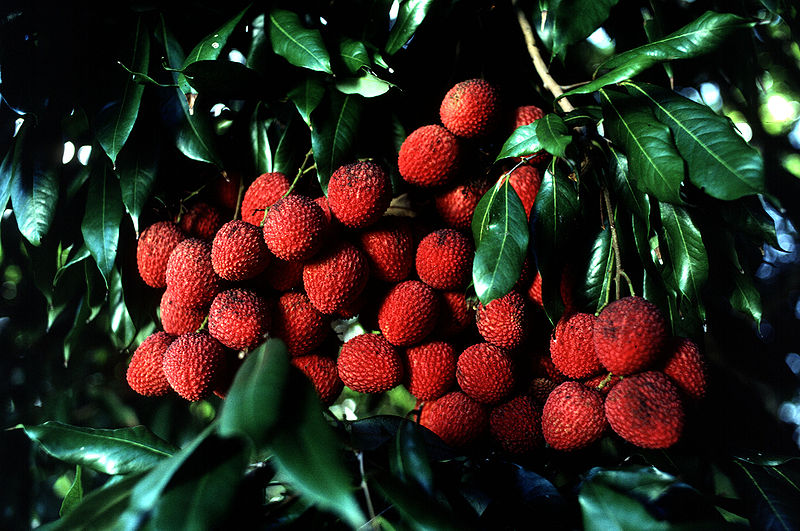Nutrition
The diet of the Hainan Gibbon is
restricted to the availability of the select rainforests that
they reside in. They are known as frugivores, meaning that they
primarily feed on fruits and fruiting trees such as Litchi
chinensis, also known as Lychee, which is a tropical Chinese
tree with pink and white fruit. Other popular fruiting trees
these primates feed on include the Nephelium topengii and
Ficus glaberrima (Jiang Zhou et al. 2008).
Figure 7. The above image is of the Lychee, a popular item in the diet of the Hainan Gibbons.
They eat the fruits of over 40
different plants and sometimes including the leaves, shoots,
buds, and insects on or in the plants. Occasionally Hainan
Gibbons will eat proteins but in very small quantities (B.P.L. Chan et al.
2005). When gibbons drink, they use their limbs to dip
in water and then lick it off of their fur. They also use their
hands to cup water and drink it.
Find out what other interesting organisms eat, such as the black widow spider or the striped dolphin.
The Hainan Gibbons spends much of the
day foraging for food. All the while they must also compete for
food with other primates and fruit eating birds, especially
during the months between February and April when tree species
are limited to less than a quarter of the 40 food plants
available (B.P.L. Chan et al. 2005).
The Hainan Gibbon and all other
species of gibbons are very precious organisms because they are
very rare and at danger for extinction. Because of the small
population sizes of the species, it is often difficult to
collect data on aspects such as their mating behaviors or
nutrition habits, so information can sometimes be limited or
specific to one population (Jiang Zhou et al. 2008).
Click here to learn more about the gibbons reproduction or return to the homepage.
